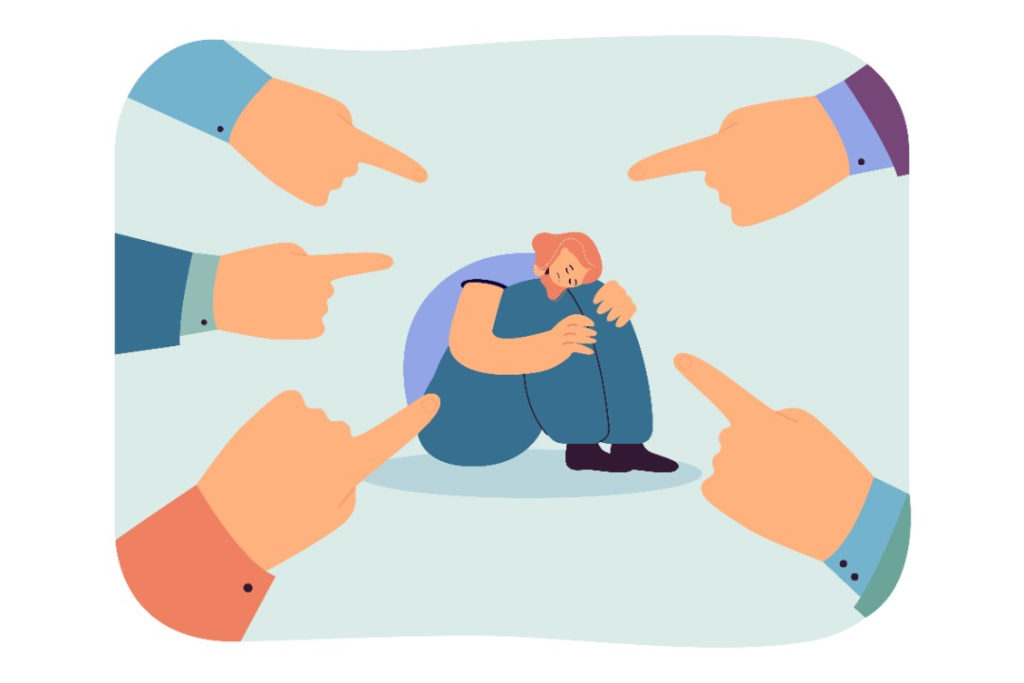The stigma around mental health has always been there, it just shows up in different ways throughout time. What exactly is a ‘stigma’ though? Well, imagine a step stool. This step stool has three steps where each step is a different thing. The first step is a stereotype, for this situation our stereotype may be something along the lines of “mentally ill people are scary” or “mentally ill people are weird and should be hospitalized.” These are sadly examples of real stereotypes. The next step up is prejudice. Prejudice is when people begin believing these stereotypes and having some sort of negative emotional reaction. Negative reactions often lead to the next, and final, step of the stigma step ladder. This last step is discrimination. Discrimination is basically prejudice shown through actions. Discrimination can be anything from avoidance to straight up refusal of service and housing.
All of this has its own way of playing out in life, but discrimination is the most noticeable step of the stool. Lots of people, both young and old, have experienced some form of stigma around mental health at one point in their lives. Over time the stigma has been going away, but it isn’t fully gone. People have always been telling people with depression and other mental health issues to just “cheer up” for years, but in the end, it can make mental health worse. Even simple phrases people with a stigma often use can seriously make someone’s depression (or other mental illness) worse.
You start hearing phrases like “oh, just cheer up” enough and you might develop self-stigma. Self-stigma is the exact same thing as normal stigma but directed at oneself. People can form a self-stigma from hearing or seeing the actual stigma. This form of stigma can seriously mess with people and make their mental illness worse.
One person that I interviewed had a lot of experience with stigma throughout their lifetime. “I was a teenager in the 1980s… I had a close friend that I told about my depression and she told me that it’s good to ‘cheer up’.” They were also often called down to the ‘guidance councilors’ just to be shown little movies about how to ‘cheer up.’ During our discussion, they mentioned how the visits to the guidance councilor felt like a punishment more than actual help.
Nowadays, stigma shows itself more throughout media. Media, through the form of movies and shows, will often show negative perspective of peoples with mental health issues. One student I spoke to said that their first ever experiences with seeing anything to do with negative mental health stereotypes was through the media. Media is sadly an easy way to see negative stereotypes and even cause people to start agreeing with them. The internet has given people power to publicize their prejudice and discrimination to the rest of the world. The youth of today can easily be terrorized by these beliefs. Through being bombarded with prejudice and discrimination in school and online at all times, students may be likely to develop a self-stigma. Students around high school are already likely to have some sort of mental health issues and a self-stigma can make it worse. Surprisingly, even with all this, the stigma around mental health along with the negative stereotypes are lessening.
Now, how do we stop the stigma? Is there any way to? Well, technically no, there isn’t a way to stop the stigma fully, but there are a few ways to help lessen it! Of course, the easiest thing to do is to just let people live their lives and not annoy them about things they can’t control. Not spreading any stigmatized views across the internet will also help. Basically, be a decent person and it will help!

